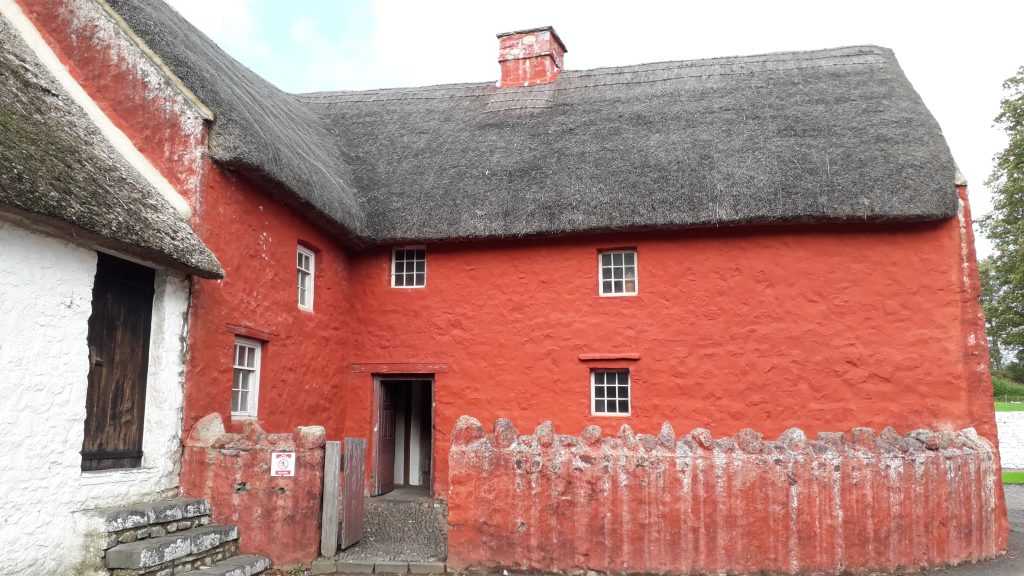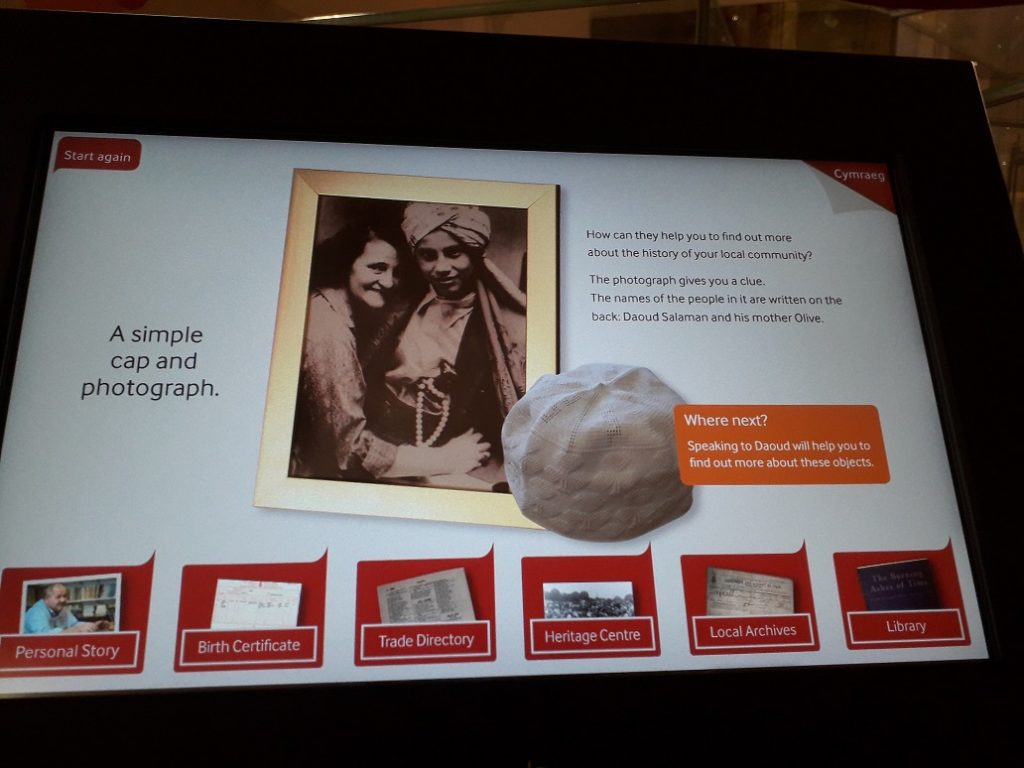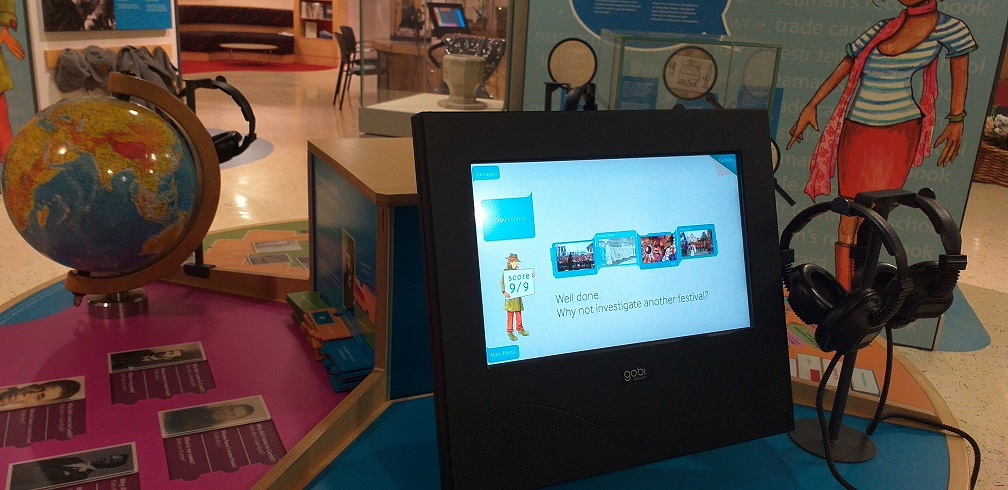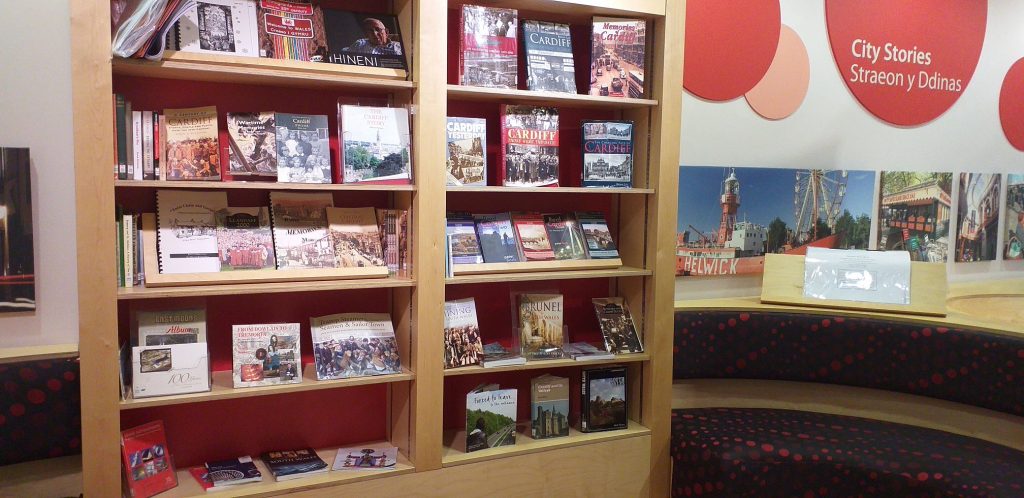
Last night we found ourselves too tired to write, having just wandered about the darkened buildings of St Fagans for two hours as part of a thoughtfully constructed and—let’s face it—thoroughly exciting late-night ghost tour. The provocatively named tour is particularly popular in the autumn months—a communications bullseye perhaps, yet one that is filled with information that is both profound, and personal. Our well-informed guide, theatrical talents on full display, led our 20-person group from house to house by the light of a pocket torch, offering a narrative constructed around not only ghost stories, but also the lives of residents, the fates of buildings, and a variety of local historical curiosities. Our taxi driver on the way home was a Jamaican who, we learned, listened to classical music when on the night shift, but switched to reggae during the day. :).
We’re already more or less used to these rainy days. We spent the first half of the day yesterday on a return trip to the Cardiff Story Museum. Today, we viewed the institution’s exhibition from beginning to end using the audio guide available for free. The guide was easy to use, and the spoken parts were brief and at a level even a child could understand. This time around we spent more time trying out the exhibition’s imaginative interactive elements and had the opportunity of watching multiple stories and film shorts. We were also able to talk to a visitor, who was so attentive, we at first thought she was from the area: it looked to us like she might have a story in common with the exhibition or even a personal object on display. Instead, it turned out she was from the United States and had come to visit a child who was working in the U.K. She was intensely curious about the local culture and thought the exhibition amazing in the way it drew visitors into both Cardiff’s history, and the lives of its people through personal stories. We felt the same way. The exhibition consisted not in a series of rooms, but a single, well-partitioned space that discussed local history—the port, the many settlers of various nationalities, local jobs, city life—in an intelligent, thematic arrangement focused primarily on the 19th and 20th centuries. And, of course, everything was interactive. How? Every exhibited object told a story, described a life: the adventure-filled route of a simple tea pot as it made its way to Canada at the time of the stock market crash, then back to Cardiff again with the return of its original owner’s grandchild; photographs and vividly portrayed cityscapes; everything provoked emotion, touched the heart, filled one with enthusiasm…. The exhibition nourished local pride, the ability to live one’s identity, and a general love of life. One film dealt, among other things, with crafts and trades that are gradually disappearing: the last mud-fisherman; a woman who, in the 1930s, provided employment to women by teaching them how to sew blankets; a labourer in a ship-building factory; a family bakery. Several audio stations offered exciting stories of local people running businesses and living their day-to-day lives, people who can still be met on the streets of the city today. And the questions: how does a museum come to display the tent of a homeless man, a person whose experiences prompt him to write a survival guide for others who share his fate?
There were various breeds of cultural memorabilia: sniffable boxes (surprising and at times pungent) harbouring the distinctive smells of a port city life. An enormous map of the city, laid out like a model railway set-up with landmark buildings and accompanying stories, communicated information useful and exciting for school groups and individual adult visitors alike. The defining moments in the lives of individual children; their objects; myriad experiences; all housed in a single room.
The lower floor of the museum functioned as a kind of laboratory, an open space divided into thematic units, colourful and inviting to adults or children. Opposite the entrance were comfortable seating, bookshelves, and, on them, publications on the history of the city.
This was where monthly group reminiscence sessions were held. Anyone could, at any time, bring in a photograph or object; anyone wanting to donate or share their valuable souvenirs was welcomed, as the invitations on the museum website confirm. Why a laboratory? The very first table one encountered featured objects in four different installations, each with its own touchscreen. These four examples taught the visitor how to probe the story behind a photograph or object independently. Several stations offered interactive activities aimed at teaching primarily younger visitors the methodology used to analyse these stories, while also giving useful information on local history—everything stood in service of this one aim, as it was the easiest way of drawing locals into various current projects. Everything there was simple, entertaining, and easy to understand, so that instruction and learning happened almost without one’s noticing; it was a youth museum that taught tolerance, consideration of others, and social sensitivity.
Kata Bodnar & Erika Koltay










